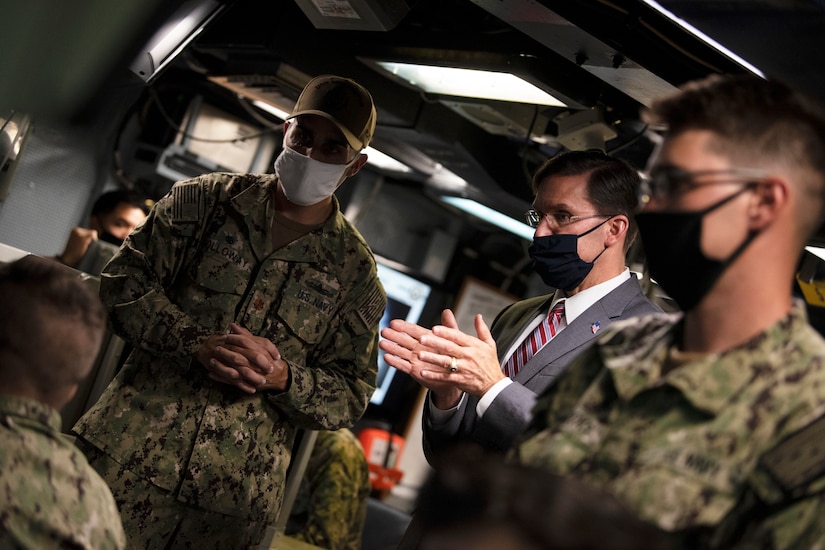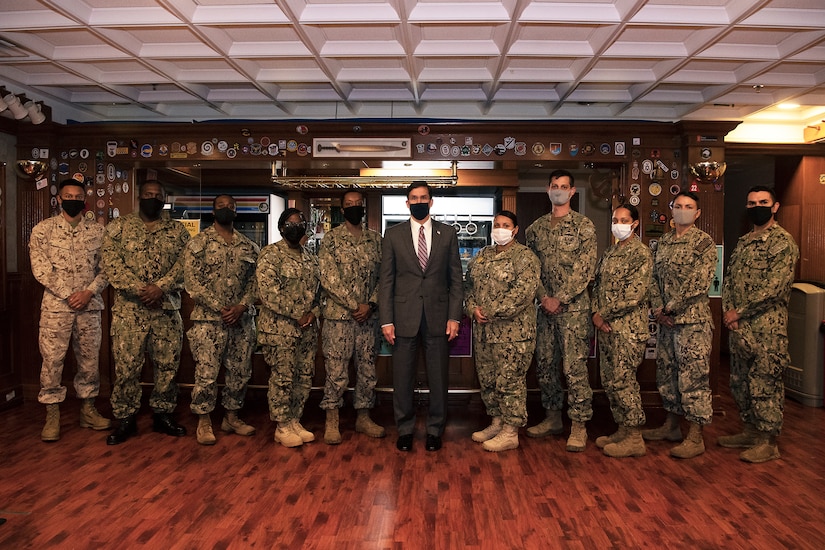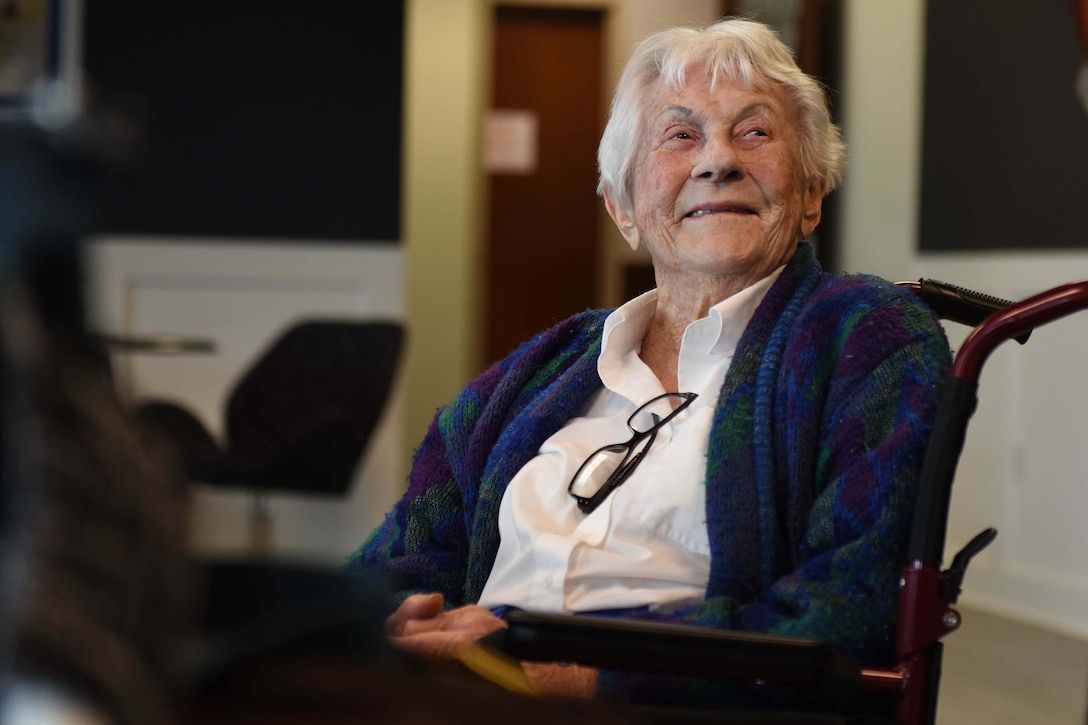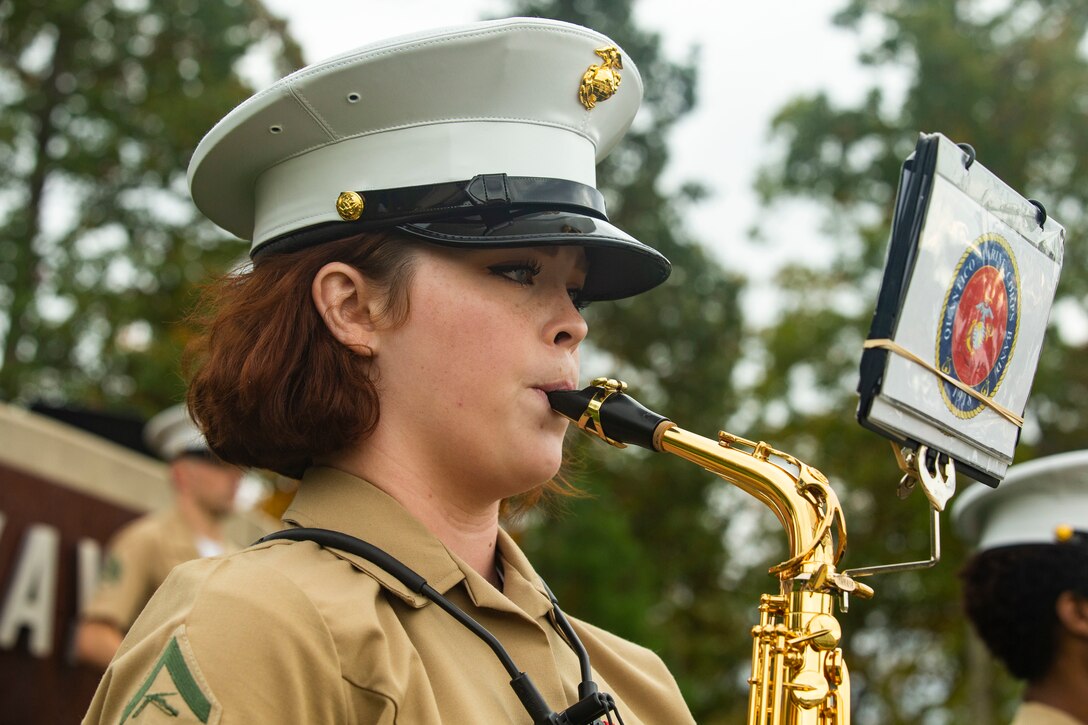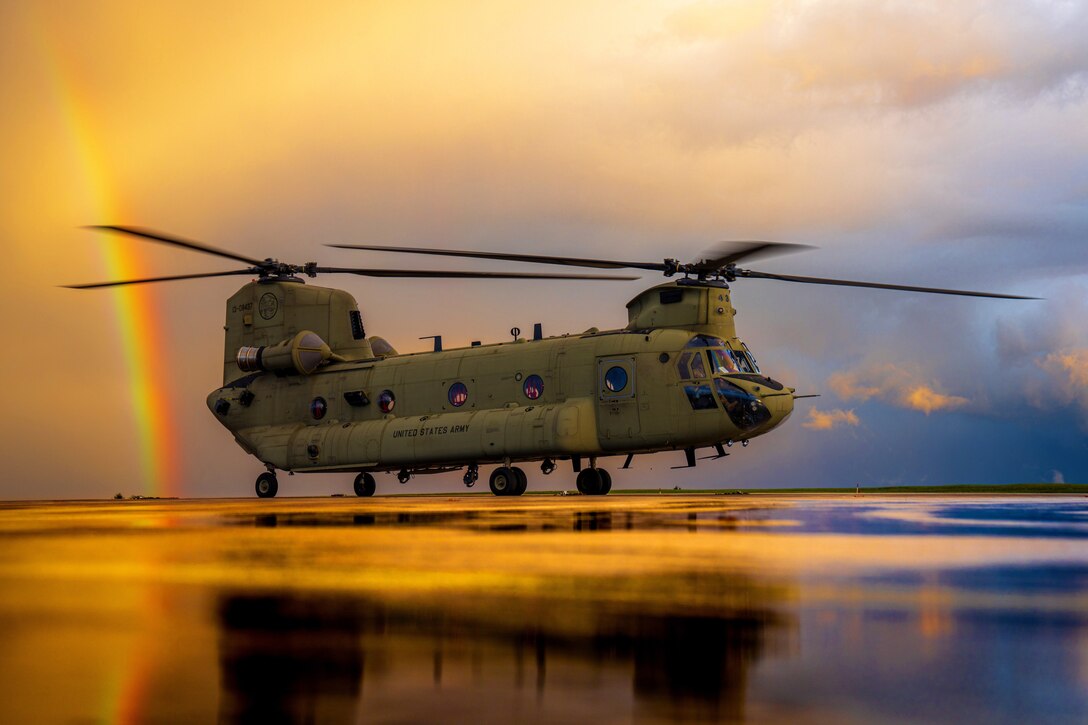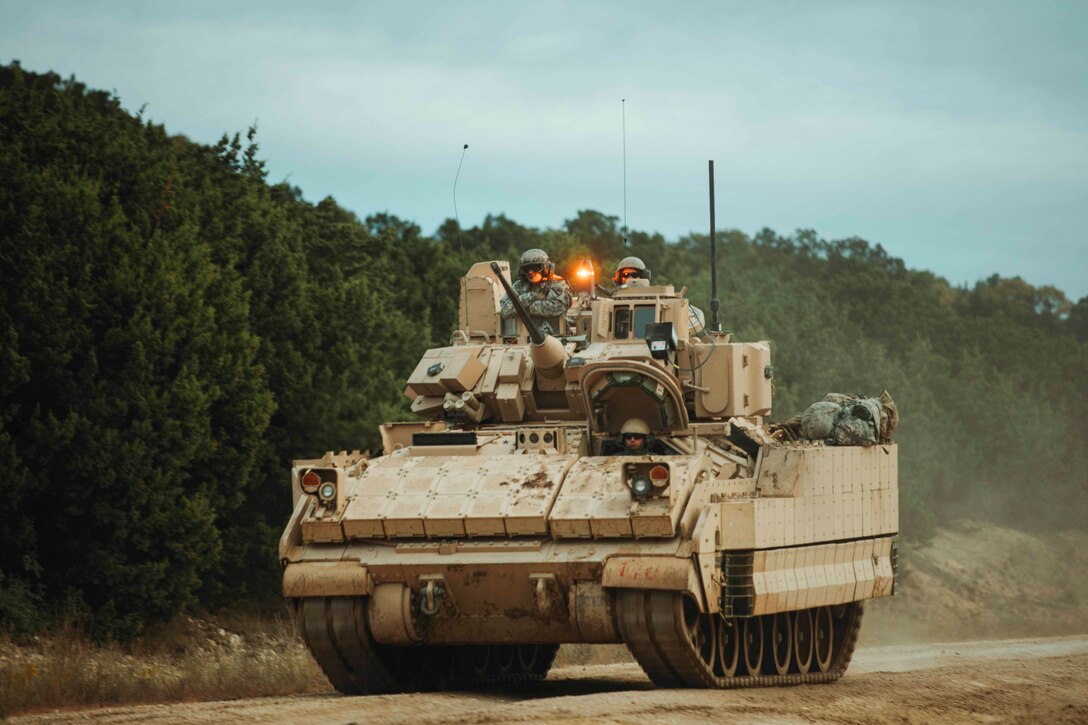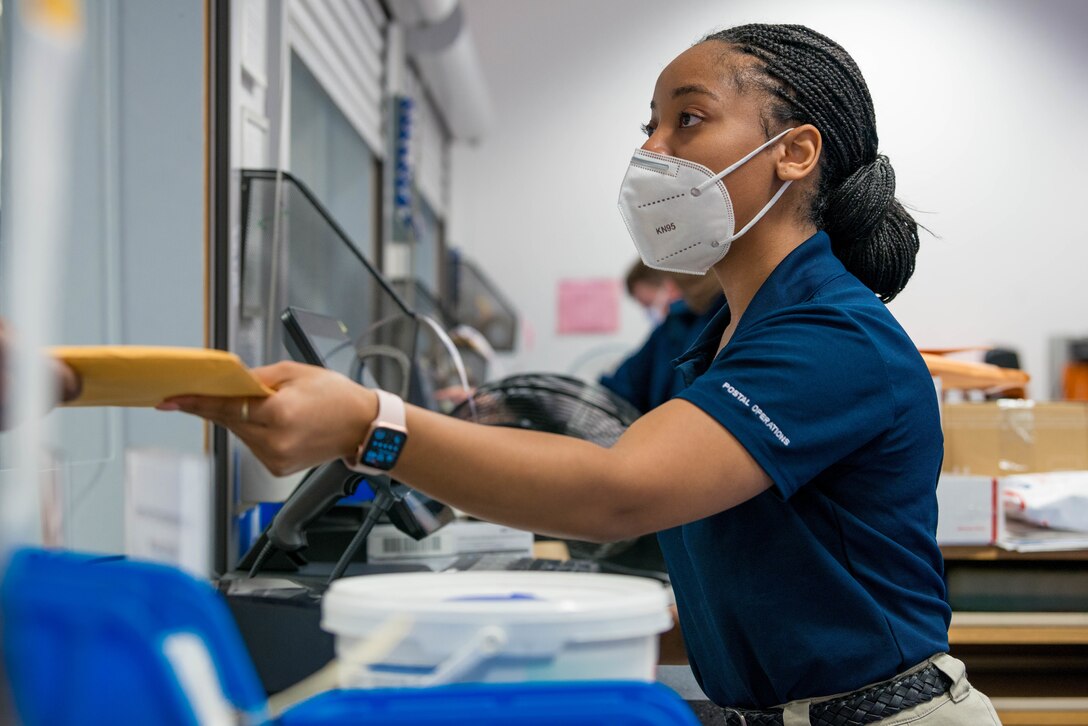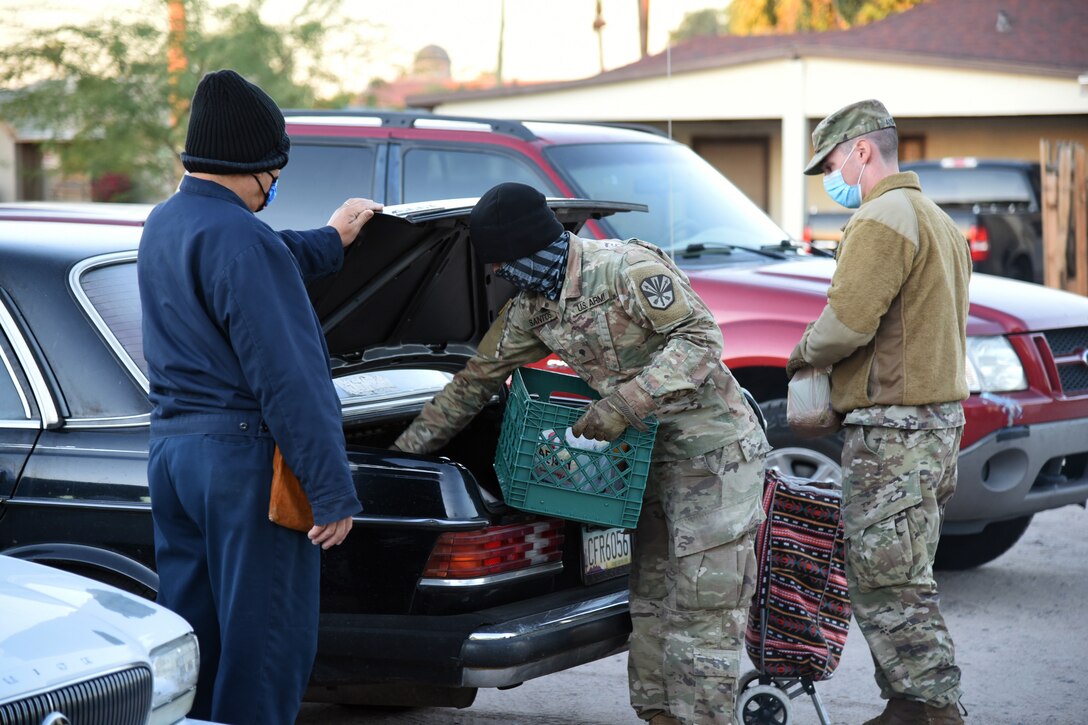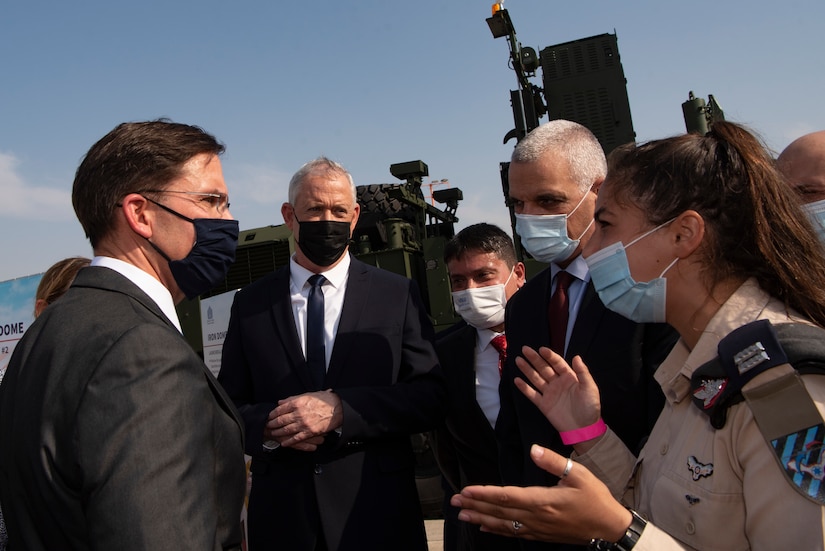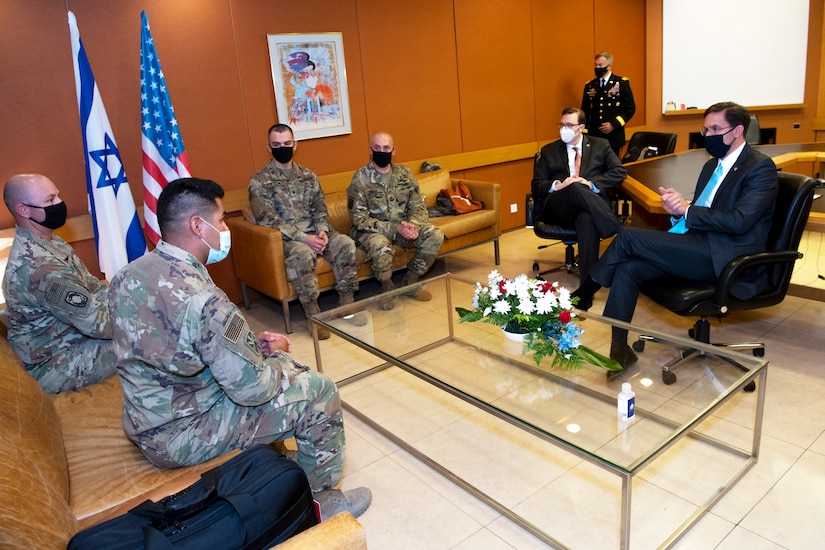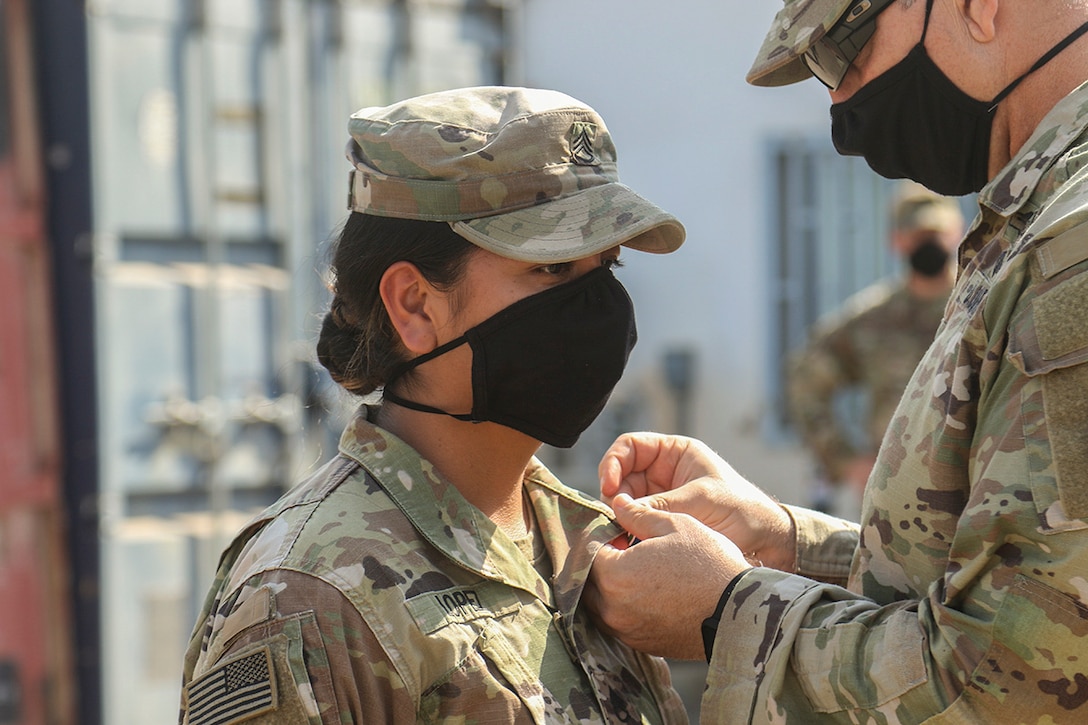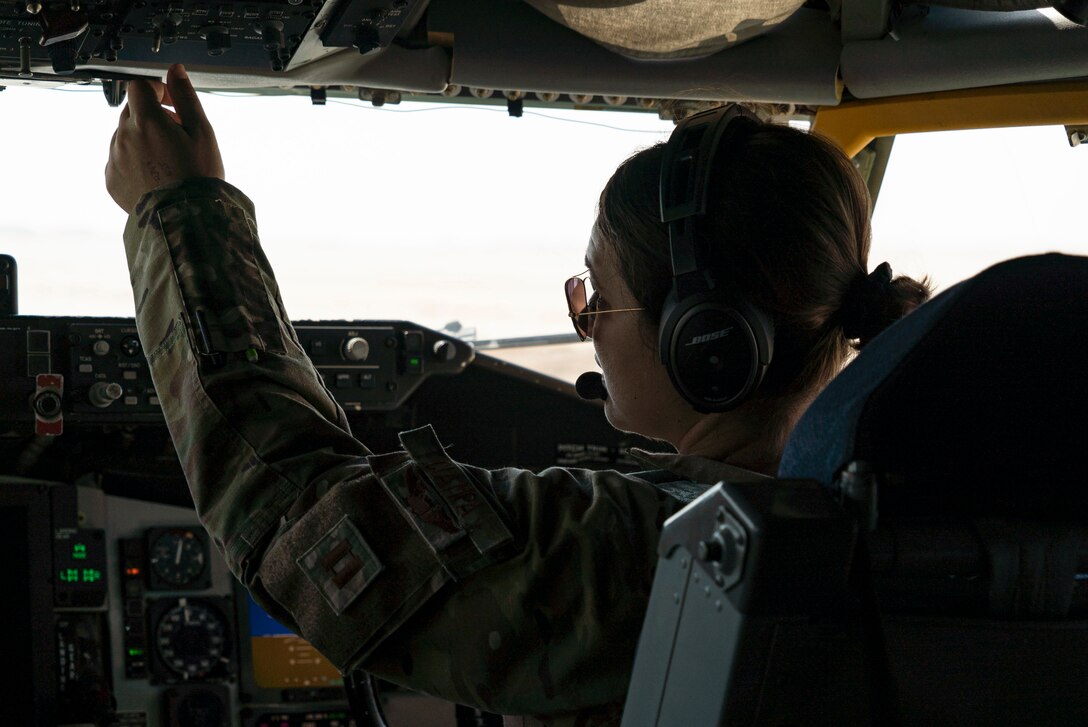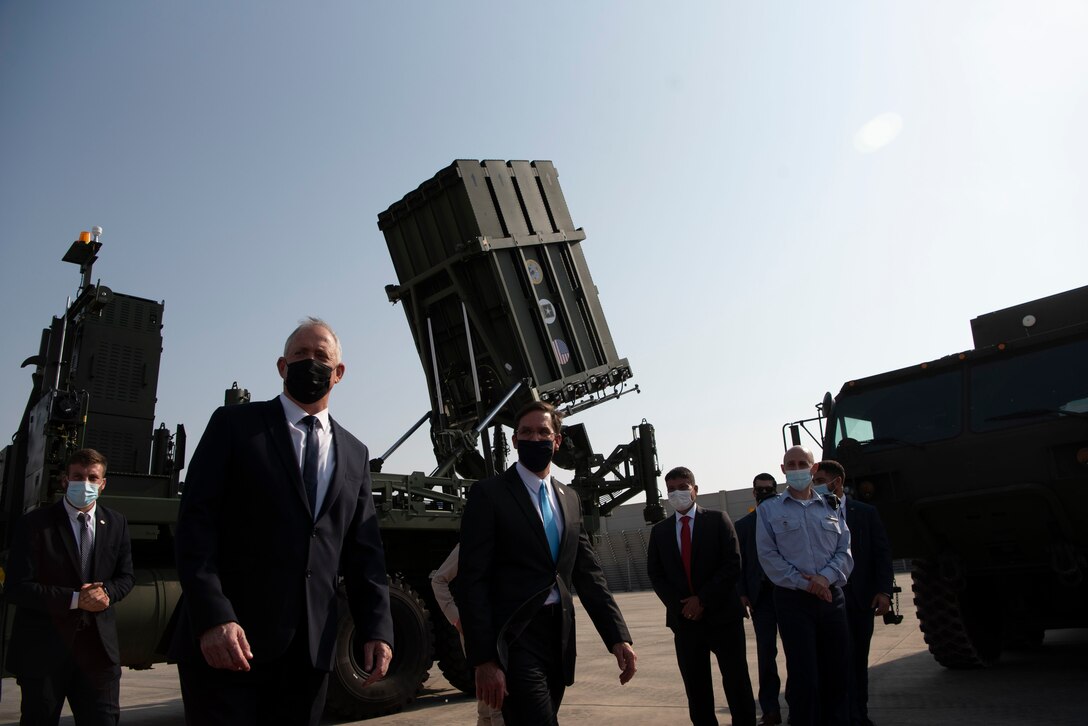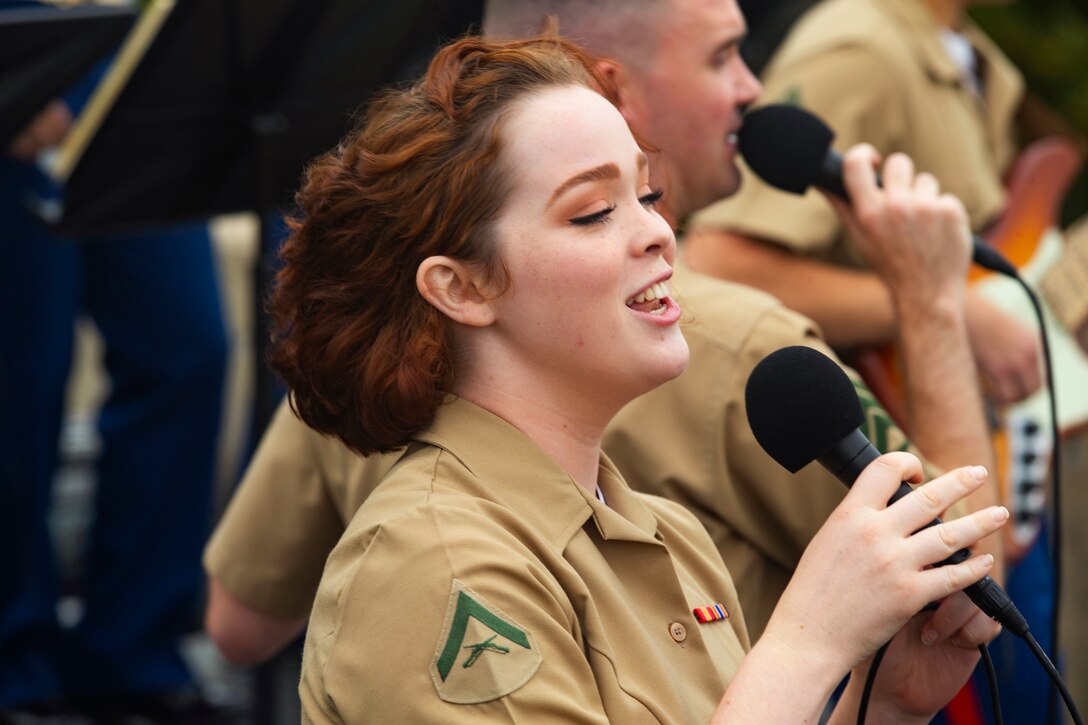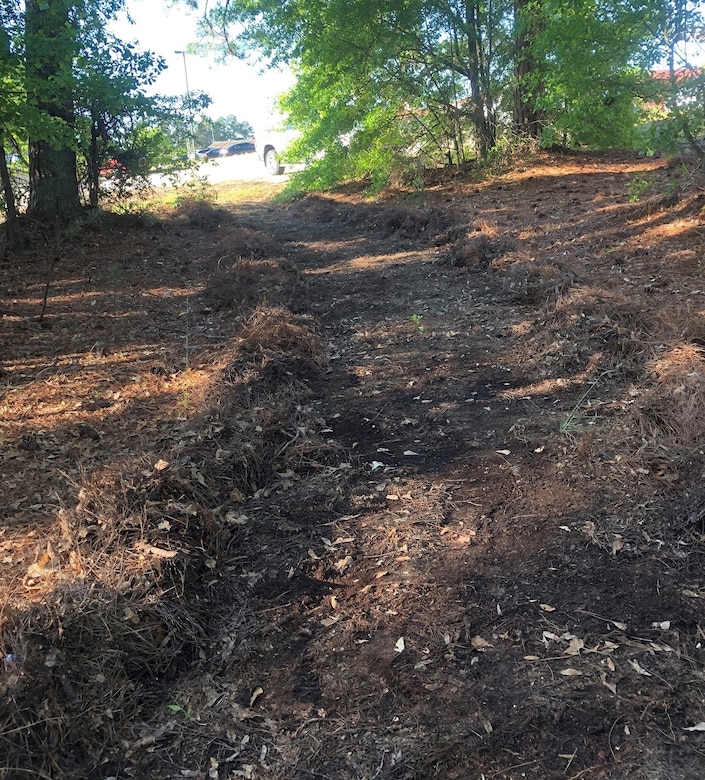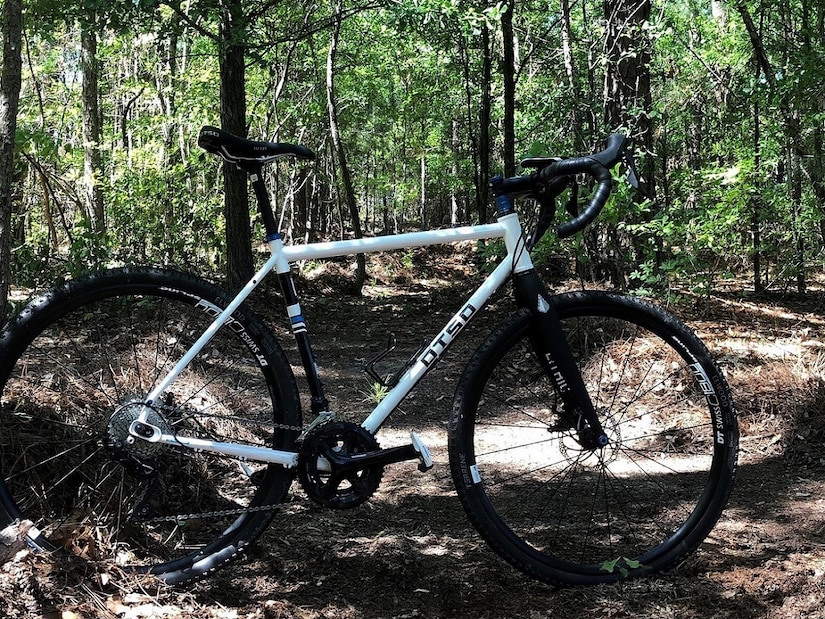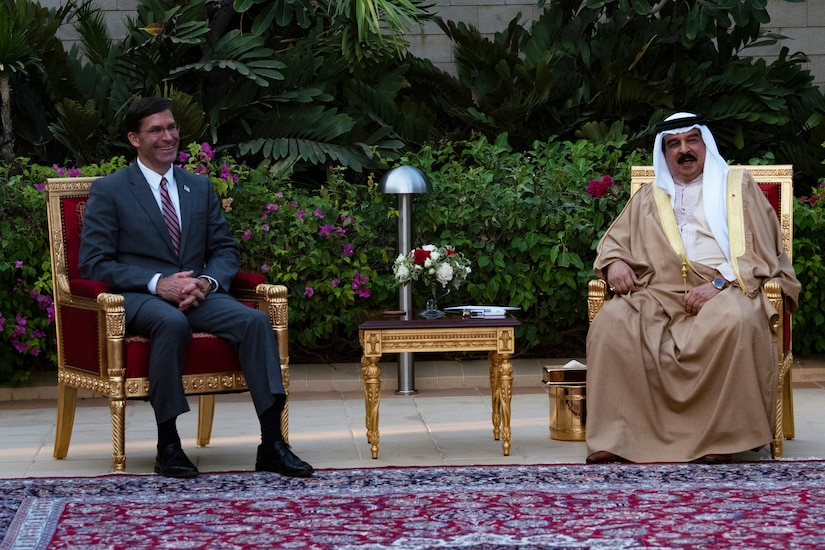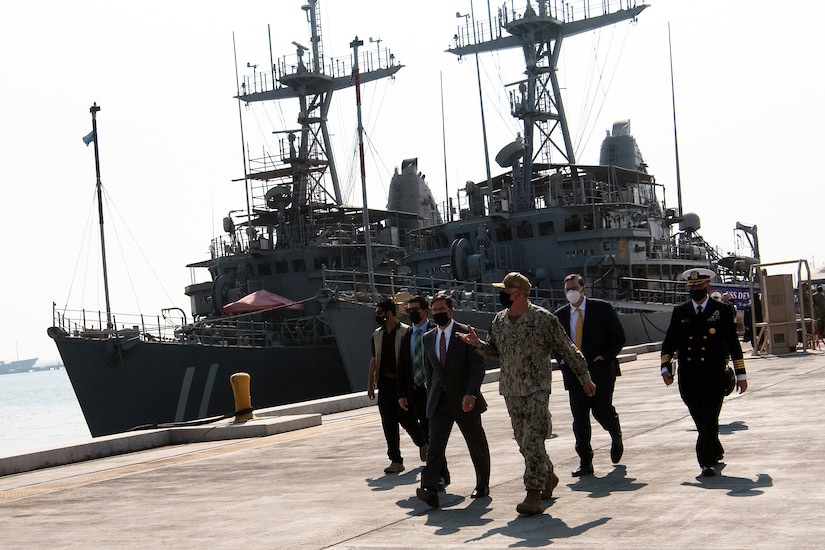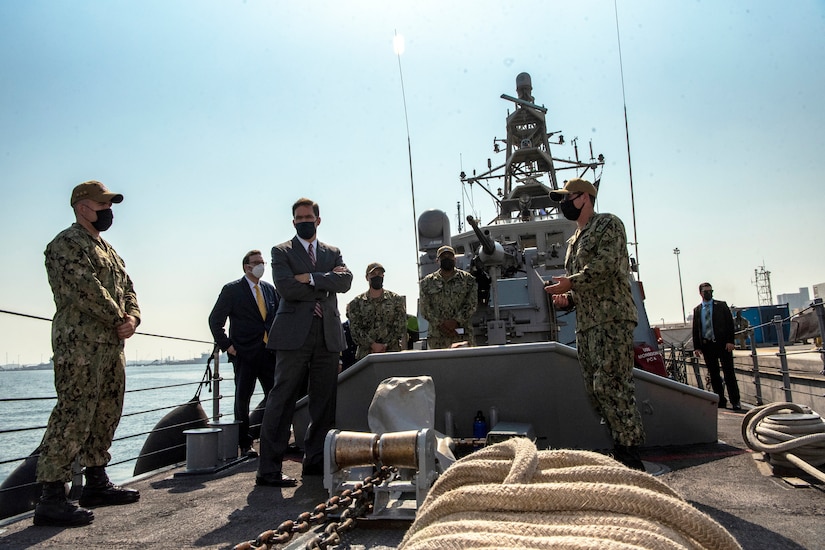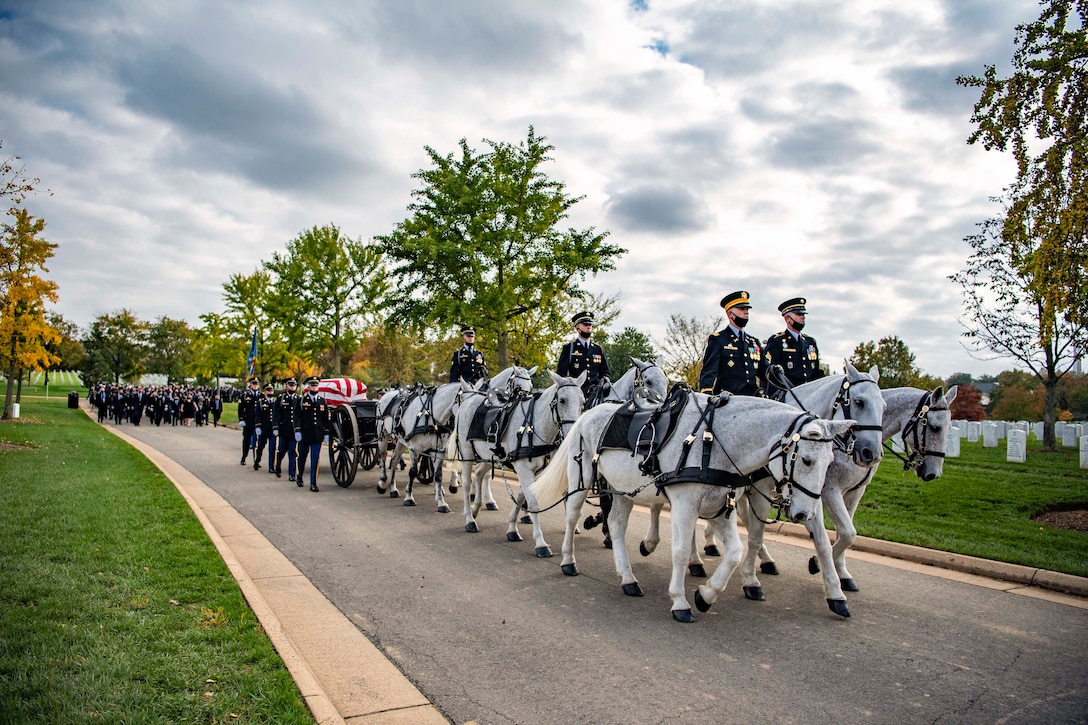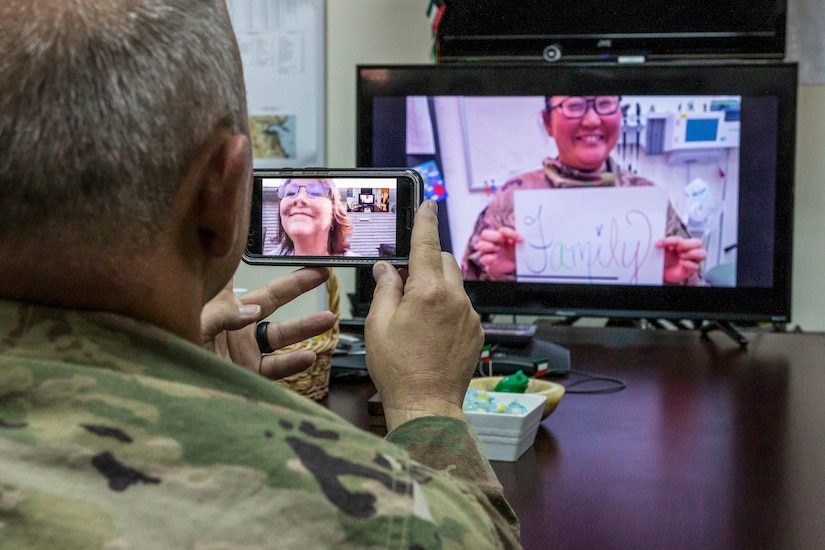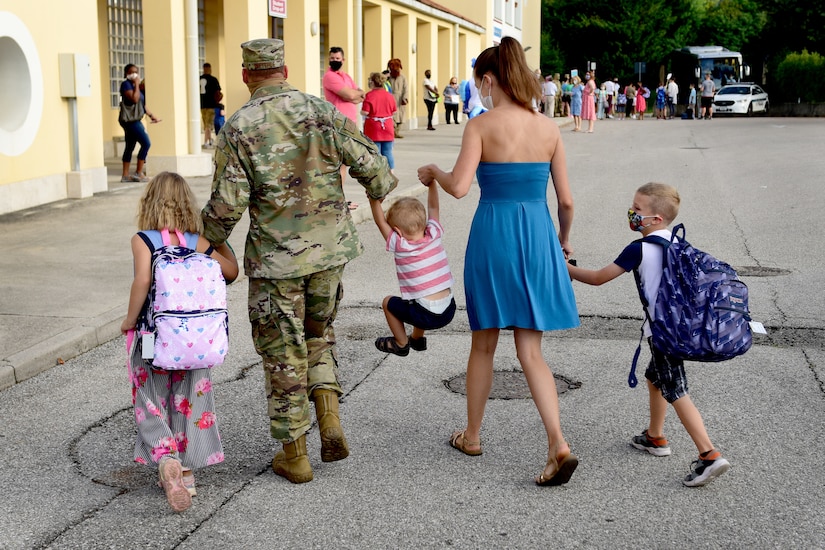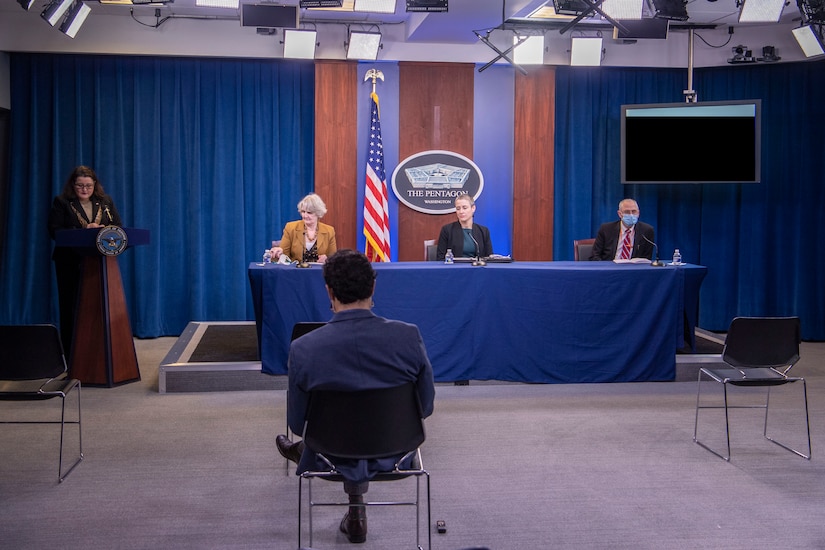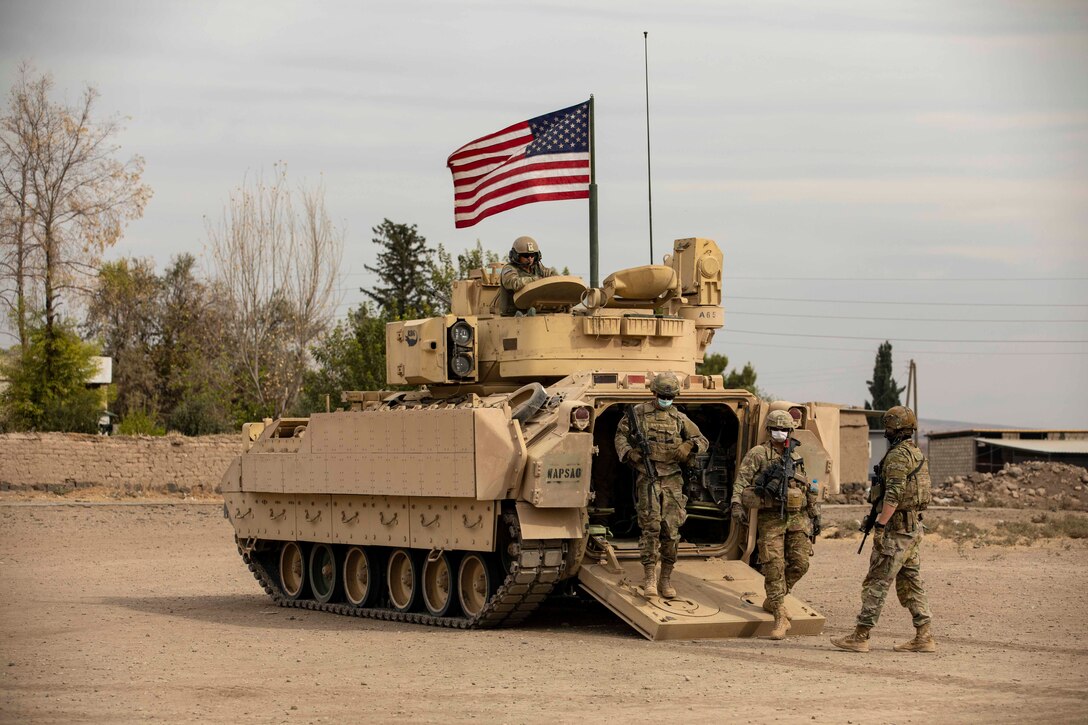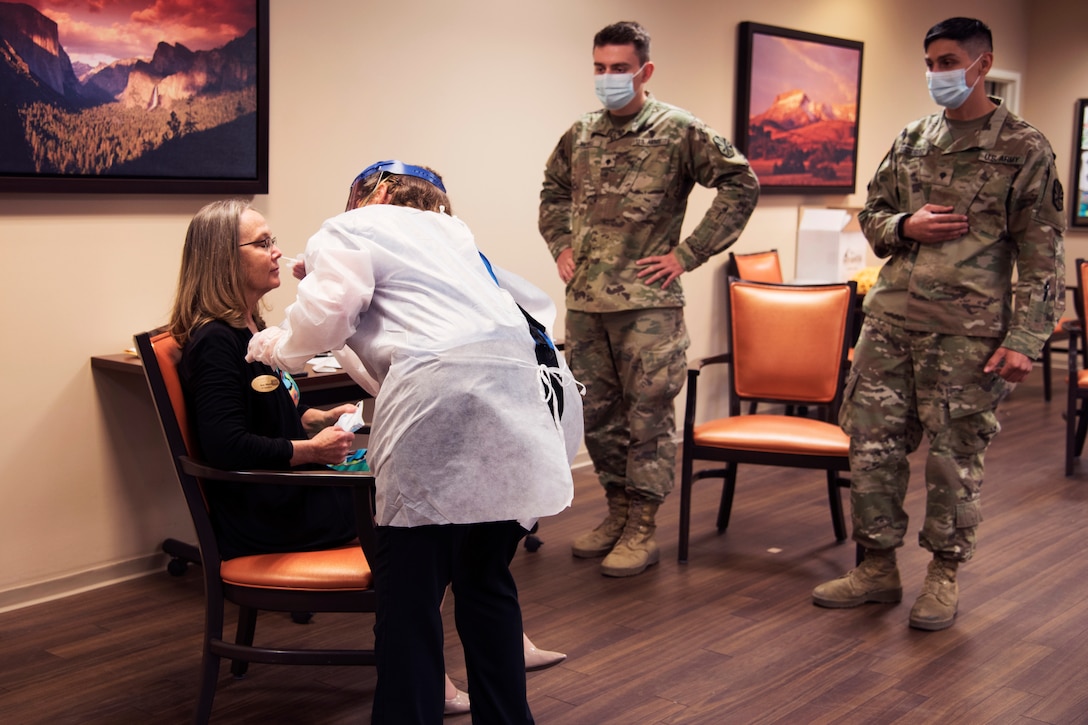Oct. 29, 2020
Deputy Assistant Secretary of Defense for Military,
Community and Family Policy Kim Joiner; Marcus J. Beauregard, Director,
Defense-State Liaison Office, Department of Defense Military Community
and Family Policy; Lee Kelley, Director, Military Community Support
Programs; Carolyn S. Stevens, Director, Office of Military Family
Readiness Policy
DEPUTY ASSISTANT SECRETARY OF DEFENSE KIM JOINER:
Good afternoon. I'm Kim Joiner, deputy assistant secretary of Defense
for Military, Community and Family Policy. To the reporters in the room
and those on the phone, thank you for joining us today. We appreciate
your participation and hope that we walk you -- you walk away with a
better understanding of what our team does every day for our service
members, their families and survivors, particularly during this time of
COVID-19.
We are the focal point for the coordination of a broad range of
quality of life issues within the department. We are home to Military
OneSource, the DOD-funded program that provides comprehensive
information, resources and confidential support 24/7, 365 on every
aspect of military life.
And before I introduce and welcome my three directors today, I'd like
to inform you that we continue to closely follow Secretary Esper's
three priorities for the COVID-19 response, which are, first, protecting
the health and safety of our service members, their families and our
civilian workforce; second, maintaining our national security mission
capabilities; and, third, supporting the whole-of-nation response to the
COVID-19 pandemic.
Additionally, we designated commissaries and other support facilities
as mission essential so they could remain open throughout the
pandemic. Our military family resources are especially critical during
the pandemic. To better serve our service members and their families
during this challenging time, military community and family policy
significantly enhanced our support efforts in every aspect of our
portfolio.
For example, we transitioned more than 1,800 military and family life
counselors around the globe from face-to-face non-medical counseling
support to telehealth. We launched a section on Military OneSource
specifically dedicated to COVID-19 to ensure our military community
receives the latest and most accurate information.
And just this month, we launched the My Military OneSource mobile
application, which is available for download on smartphones and tablets
to provide easier access to information, support and referrals.
Secretary Esper holds an unwavering commitment to caring for our
warfighters and their families, as evident in his adding his own fourth
line of effort to the National Defense Strategy of taking care of
families. This has sent a strong message to the military community and
throughout the Department of Defense. We understand how much our people
rely on the resources we provide, so this is a no-fail mission for us.
You're going to hear about the spectrum of support we provide.
However, in order to really get a true picture of the impact, nothing
replaces talking to the service providers who do the work, or the
service members and families who access the resources. So if at any
point in the future you would like to take a deeper dive into the
resources and talk to those providing and receiving that direct service,
please let us know, and thank you.
Now, allow me to introduce my three directors. Mr. Marcus Beauregard -- over to you, Marcus.
DIRECTOR MARCUS J. BEAUREGARD: Good afternoon. My name is Marcus
Beauregard. I'm the director of the Defense State Liaison Office. Our
office of 10 people work with state governments.
Our mission from the very onset has been to essentially eliminate
barriers that military families find as a result of unintended
consequences of state policy. We also have done some work in terms of
basically comporting state policy with federal -- federal law and
policy, to ensure that there is no disconnect.
Over the years, we've worked family law; we've worked consumer
protection; we've worked child care; K-12 education; higher ed.; EFMP
[Exceptional Family Member Program] support through Medicaid waivers;
employment security; licensure; voting; National Guard support;
veterans' treatment courts; and disposition of human remains.
Right now, we have 10 key issues that we're working that I'll be
happy to explain, and go from there. Look forward to your questions.
MS. JOINER: Thank you, Marcus.
Ms. Lee Kelley? Lee, you can take it away.
DIRECTOR LEE KELLEY: Thanks, ma'am.
My name's Lee Kelley. I'm director for military community support
programs in the Office of Military Community and Family Policy. My team
oversees Military OneSource, the military and family life counseling
program, as well as some of DOD's spouse employment programs, like the
Spouse Education and Career Opportunities Program, the Military Spouse
Employment Partnership and the My Career Advancement Account Scholarship
for military spouses.
I wanted to just offer three areas of focus that we have right now
during this -- this particular phase of 2020, and the first is a focus
on the virtual provision of support. And so we're very lucky in --
within our team to be implementing programs that were already
predominantly delivered virtually when in March, we experienced the
widespread closures as a result of COVID-19. However, we -- we have
added additional virtual capability due to the current needs of our
service members and families.
And just as an example, in the spouse-employment space we are
particularly increasing our number of virtual engagements. Our Virtual
Military Spouse Symposium back in April of 2020 saw nearly 4,000 spouses
attend, versus typically what we'd see on an annual basis at -- at that
one event would be more like 2,000 spouses.
We also recently held our Virtual Hiring Fair through the Military
Spouse Employment Partnership, bringing almost 700 military spouses to
visit more than 100 companies who participate in the partnership, who
are committed to spouse hiring.
The second area of focus that we have right now is of the virtual
delivery of a -- a new initiative developed by the Office of People
Analytics called REACH -- Resources Exist, Asking Can Help. It's a --
it's a program, an initiative that's actually focused on dispelling the
myths around help-seeking, and -- and COVID-19 has not prevented us from
moving that forward. And so we're now focusing more on a virtual
delivery with the goal, again, of dispelling the myths of help-seeking,
normalizing the experience of help-seeking, removing stigma that might
exist for our service members and families.
And the third area of focus, that we're really very excited about, is
this fall we've launched a relationship campaign because the top reason
that service members and families seek non-medical counseling through
the Military and Family Life Counseling Program, as well as through
Military OneSource, is for relationship support, and certainly, that
need has not gone away during this pandemic. So we've been focused on a
public-facing relationship campaign to help pull back the curtain on
what relationship support looks like for couples in the military, and
we're looking internally at how we provide that relationship support to
determine how we can do it in the most effective manner possible. And I
really look forward to your questions. Ma'am?
MS. JOINER: Thank you, Lee. And last, but not least, Ms. Carolyn Stevens. Carolyn?
DIRECTOR CAROLYN S. STEVENS: Good afternoon. I'm Carolyn Stevens,
the Director of the Office of Military Family Readiness Policy. Our
office is divided into three teams: Children, Youth and Families;
Family Advocacy Programs; and the Office of Special Needs. I'd like to
take a few moments and share some of the initiatives that -- that we
have in place that are supporting our families.
So starting first with the Exceptional Family Member Program, we
recently launched, with the help of Military OneSource, a web
application called “EFMP and Me.” EFMP and Me gives our families, our
service providers and our leadership access to a myriad of different
topic areas so that individuals can go into the web application and
search on very specific information to get questions that -- that might
be specific to their individual needs, like preparing for a move;
questions about education when you're transitioning to a new location;
questions about TRICARE and other medical needs; or just -- just the
adjusting to new life situations, if you have a family member enrolled
in EFMP.
October is also Domestic Violence Awareness Month, and our Family
Advocacy Program, along with the department, is taking the opportunity
to reinforce our commitment to keep our military families safe; to
support victims of domestic abuse; and ensure that domestic violence is
recognized as a crime in those -- in those cases where there's abuse and
harassment. We have really focused on what we call a coordinated
community response to the work with family advocacy programs, ensuring
that we are working with our other entities like law enforcement,
investigators, school personnel, personnel in children and youth
programs. And the importance of that means that we are taking a very
integrated approach in providing supportive services through all of the
family advocacy programs.
In particular, we're excited to -- to announce that we have recently
launched a training course that involves first responders; again, a very
concrete way of ensuring that we take advantage of technology and take
advantage of those relationships to work together to support our
families.
And then finally, in the area of children, youth and families, we've
recently launched an initiative through Military OneSource, again, where
we've expanded the availability of childcare for hourly care purposes.
We know that not every family needs care on a full-time basis, and
through this expanded service with Military OneSource, families can now
go into a web application. They can search care providers and find a
care provider who can be available to meet those short-term, hourly care
needs.
I look forward to your questions. I'll stop there. Thank you.
MS. JOINER: Thank you, Carolyn. OK, let's get started. Abraham Mahshie with the Washington Examiner. Go ahead.
Q: Thank you so much. (inaudible) these important initiatives and
topics that you guys have spoken about, and I have a few questions.
Lee, I wondered if you could describe a little bit more, specifically,
the counseling and the job sort of assistance that you've been providing
since COVID hit. Obviously, mental health is a big issue related to
the coronavirus lockdowns. I wonder if you could get into more details
on that.
And then Carolyn, you spoke about domestic violence awareness this
month, and I -- studies show that the more time people spend together,
the higher domestic violence is. And so coronavirus lockdowns is
putting people together for longer periods of time. I wondered if
you're observing that in the military as well, and how you've responded
to that. Thank you.
(UNKNOWN): Thank you. Go ahead, Lee.
MS. KELLEY: So I'll start, talking about our counseling programs.
Our counseling programs, from the beginning, since they -- they've --
since they started more than a decade ago, have been centralized and
standardized through Military OneSource and the Military and Family Life
Counseling Program. The biggest difference between the two programs is
that Military OneSource is a -- it's entirely, almost entirely
virtual. So it's a call center, 1-800-342-9647, 24/7, 365 days a year.
And it's often referred to as a one-stop-shop. So any concerns,
questions related to military life, whether it's financial counseling,
health and wellness coaching, assistance with eldercare, childcare, not
-- certainly, non-medical counseling, spouse employment, tax filing --
you name it. Service members and families can reach out to Military
OneSource at any time. They can do that via the 1-800 number, or they
can do that via live chat through the website.
The Military OneSource Program has always provided non-medical
counseling. That non-medical counseling -- and just to -- to kind of
step back and define non-medical counseling for a second, because it's
not the most intuitive phrase. Non-medical counseling is for all of
those issues of -- those stressors related to military life that are
under a threshold of a mental health diagnosis -- so relationships,
anger, communication, grief, loss. Those are all really appropriate for
the solution-focused, non-medical counseling that we provide through
Military OneSource.
The Military OneSource non-medical counseling can be provided
face-to-face in the community, around where a service member or a family
member lives or works; it can be provided via telephone or via video.
Separately, the military and family life counseling program, before
COVID-19, was provided solely face-to-face. This was face-to-face
delivery of non-medical counseling support where service members and
families live and work.
So it's a little bit of a nontraditional counseling program, in that
you could connect with a counselor while you're fixing an aircraft on a
flight line, because that counselor's been embedded in your unit. You
could connect with a counselor when you go to pick up your child at the
child development center or at the school. So the counselors are
located in convenient places for service members and families, so it's
always been done face-to-face, around the globe, through the use of more
than 2,000 counselors.
What happened during COVID-19 was a demand signal immediately went up
from our military communities, service members and families around the
globe that said "we don't want a -- yes, we can't have the face-to-face
support right now, but we don't want to lose the capability of the
counseling support provided through the military and family life
counseling program."
So the program quickly transitioned in a matter of days to provide
telehealth support. And so that same counselor that you knew from your
child's school, you were then able to connect with via video. Military
OneSource has been and continues to be used as a central directory for
military and family life counselors. So if you say "oh, I -- I know I
had one at my unit, but they're not here right now because we're all
working from home," you can call Military OneSource and find out the
contact information for that counselor so that they can set up a video
appointment.
So that's -- that's where we were back in March and where we continue
to be, but the military and family life counseling program, it just
depends on the location as to whether they're providing face-to-face or
telehealth support right now. Completely based on the conditions on the
ground and the needs of that location.
I'll move on to the spouse employment piece that you referenced. The
spouse employment piece -- so again, the spouse employment program
really benefited from already being delivered centrally and in a
standardized fashion virtually.
So the spouse education and career opportunities program is
implemented through Military OneSource and it provides a dedicated
career coaching support to military spouses, and it always has. So it
was already virtually delivered, so it was seamless during COVID-19.
What the call center experienced, what the program and the career
coaches experienced was not a tremendous spike in spouses calling
regarding unemployment, but certainly to include calls related to
unemployment; layoffs; how do I balance work and virtual schools for my
child; and also for our spouse students, who maybe were attending school
in person using the My Career Advancement Account scholarship -- my
school's closed, does that mean I'm going to lose my funding? And the
short answer is no.
So from the spouse employment perspective, we allocated more effort
towards meeting the virtual needs by offering new virtual events. So we
offered, just in the last couple of months, career empowerment expos
for the Air Force and the Navy that had been previously planned to have
been done in person. Those were then done virtually, which actually
allowed us to have a wider spectrum of speakers, because there was no
travel involved in that.
The third that I just wanted to touch on, that you mentioned, related
to COVID-19 specifically -- I mentioned the shift of the military and
family life counseling program to telehealth. I'll also say that
Military OneSource did need to undergo a shift at the onset of COVID-19
related to support provided to military youth.
Previously, military youth could only obtain non-medical counseling
face-to-face through Military OneSource. We heard, again, a demand
signal from our military community saying "we need our military youth to
be able to access video counseling from their home." And so the
program was modified to allow that capability. A parent just needs to
come in and give their consent at the start of the video session and
then the military youth is able to proceed with a video counseling
session.
Q: Great. Do you have any metrics to describe, like, sort of how --
when you talk about demand signals, like, the increased demand for
those counseling services or the -- the jobs? Or if you don't have
metrics, like, do you have any anecdotes? Like, did -- did this -- did
this actually go up, did it go up by a lot?
MS. KELLEY: So with Military OneSource, we've seen a steady increase
in utilization, but not necessarily -- it didn't start with COVID-19.
We've been seeing, over the last two years, a steady increase in
utilization. That steady increase has continued through COVID-19.
What you see in COVID-19 are anecdotes related to the circumstances
introduced by the pandemic. So again, I'm not used to having my spouse
in the house all day long -- communication challenges related to
relationships. You know, from -- from a -- a metric standpoint, you
know, just to give you kind of an idea of the amount of relationship
support that's provided through the programs, I'm -- I'm going to cite
an F.Y.'19 data point, but it hasn't changed tremendously in F.Y. '20.
So F.Y. '19, we saw relationship support make up more than 260,000
sessions within the military and family life counseling program out of a
total of 765 sessions. So about 34%. Again, that's the top issue,
people seek non-medical counseling through our programs -- is for
relationship support, and in F.Y. '19, again it was up -- it ended up
being more than 260,000 sessions, and so that -- that has remained the
key issue.
It's just that the -- the relationship support that's being asked for
now includes the issues that have risen to the surface as a result of
COVID-19. In some cases, couples have welcomed the opportunity to work
virtually with a military and family life counselor from the comfort of
their home, rather than having to coordinate to meet their spouse on
base or at another location to have that session.
So for some couples, they've embraced the convenience of -- of
telehealth, and for others, it made -- more appreciate the face-to-face
support, which we're able to do safely, abiding by CDC -- Centers for
Disease Control requirements in areas where that's acceptable and
appropriate.
Q: OK, thank you.
MS. JOINER: Carolyn, go ahead.
MS. STEVENS: You ask about the increase -- potential increase in
domestic violence, domestic abuse cases. Certainly we -- we see the --
we see the news and we know that in the civilian community, there are
increases in the number of reports.
We are not currently seeing that within our military services. In
fact, the -- the number of reports now are very similar to the reports a
year ago this time. We -- we are concerned that -- and this is an
issue that we do need to maintain watch -- I -- I -- I do want to pivot,
I think what's important, and it mirrors a lot of what Lee is talking
about -- the -- the value and the importance we've placed on the
availability of supportive services through virtual methods.
So our family advocacy clinicians have also shifted to that virtual
service delivery, our new parent support counselors, the home visitation
program shifted as well, victim advocate support, all of that can be
provided through -- through virtual means.
So -- so we haven't lost the rhythm of being able to support both
victims, provide information to leadership in terms of -- of what are
the next steps in cases of allegations of abuse. We didn't lose
anything because we just shifted to a virtual means.
Q: In (inaudible) increased sort of calls, or you said no increased reports?
MS. STEVENS: No increased reports. And that's what -- so I'm
focused on your question, I'm interpreting your question as -- we do
read in the news that there are increased reports, and that's really
where we are, are staying connected. That's what -- that's the data
that gets reported back to us.
Q: All right, very good, thank you.
MS. JOINER: Thank you, Abraham.
We also have Jennifer-Leigh on the call from Air Force Magazine, on the phone, if you'd like to ask your question?
Q: Well, hello everyone, and thank you so much for taking the time
to speak with all of us. I have two quick questions. The first was
actually a follow-up on the (inaudible) just received. And this
question, again, is for Ms. Stevens.
I was just hoping that you could elaborate on the training programs
that involved the domestic violence issues that you said was
incorporating first responders. If you could just speak to the nature
of what that program is, whether it trains with families, that brings in
first responders as speakers or if they're training first responders to
be more kind of fluent in what military culture looks like, what
military family dynamics look like.
And then my second question is on an unrelated note, and that's for
Mr. Beauregard. And that question is, have you seen any progress on the
part of states with respect to military staff licensure portability,
especially following the Department of the Air Force's assessment of
portability in all states where the department has installations? Thank
you very much.
MS. STEVENS: So thank you for that question. Regarding the training
that I mentioned in my opening remarks, it is focused on technology.
Last year, during Domestic Violence Awareness Month, and again this
year, our office focused on the fact that abuse can occur through
technology, through the phone, through text. That we needed to move
away from thinking about this issue as simply a face-to-face issue
between an alleged offender and a victim.
And so this training that I mentioned is -- is really focused
initially at that law enforcement group as first -- first responders,
and bringing them into the conversation about the importance of
understanding how technology can be used in cases of domestic violence.
And while -- while we worked with law enforcement to develop this
training, it's appropriate for all first responders. Just, again, this
is really focused on the technology aspect of this issue.
Thank you. Lee?
MS. JOINER: Marcus.
MS. STEVENS: Marcus, sorry.
MR. BEAUREGARD: Thank you for that question. I'll see if I can
repeat it and make sure I got it right. You're asking about whether we
saw any improvement in military spouse licensure policy at states; and
has there been any impact of the Air Force evaluation system that feeds
into the -- their basing model? Is that correct?
Q: Yes, basically I'm just wondering if anything has improved on the
licensure portability front, and if the -- I guess if that Department
of the Air Force assessment, that kind of graded or have indicators for
the relative portability of licenses in various states where the
department has bases, if that has had any positive impact.
MR. BEAUREGARD: OK, thank you -- thank you for that.
I'd like to start with just saying that our office has been working
military spouse licensure for several years, and over a period of time,
we got the states to enact certain legislation around endorsement,
temporary licensure, expedited application processes.
In 2017, we found at the -- as a result of a study that was done by
the University of Minnesota, that those were not necessarily the most
impactful ways to get to the issues that military spouses have with
licensure, which are fundamentally about the process and about the
amount of effort, time and resources it takes to get to the point of
being licensed in a new state.
And so what we did is we went back to the states in 2018. We were
aided -- and I wanted to make this point, that the letter that came from
the three military department secretaries was sort of the shot across
the bow that really got things moving. States once -- where they
thought they had taken care of the problem, realized, no, there is more
to be done. And so we took advantage of that opportunity to work with
states on new best practices that they were developing.
Concurrent with that, at the same time, the Air Force was developing
their criteria to evaluate states, and we worked with them, based on the
knowledge we had coming from our experiences before 2017 and the result
of the University of Minnesota study. And so they started developing
that evaluation process and at the same time, the department started
working -- as I said, working on this issue as well.
And Secretary Esper, in 2019, said that after he -- he established a
fourth line of effort for the National Defense Strategy that included
taking care of military families as essential to our national strategy,
he also identified military licensure as a key element to that, and
requested that we put together a report that would go to all the state
governors in the defense -- or the congressional defense committees.
In that, we lined out a way head, three lines of effort. And those
three lines of effort developed into also a criteria. So the Air Force
had a criteria, we had a criteria. Not necessarily the same, but
supportive, definitely supportive of each other. Ours is oriented --
ours -- the OSD criteria, along the three lines of effort, just
basically there to provide feedback to the states to let them know how
are they doing on those three lines of effort. The Air Force developed a
criteria around nine occupations as a test of how well they're doing.
And so we use both of those. And where there are any differences,
we've been working very closely together -- the Air Force team and our
team -- and approaching states where they have any concern about a
difference in that evaluation.
As far as the impact of that evaluation, it has definitely, I think,
heightened the awareness of this issue in states where there are Air
Force installations. And we are the boots-on-the-ground team that deals
with the state legislators. And so we hear from them and ask -- have
them respond to us about how can they do better. And so we provide them
best practices from other states, which indeed provide the support
necessary to improve to answer the needs of the Air Force criteria as
well.
Long answer, but hopefully that gave you some context of how we're
doing this now. The -- the three lines of effort are included in our 10
key issues for this year and so we're taking them to the states in 2021
to continue our effort. And we're seeing great response.
In 2021, we'll be working on enhancing licensure, state licensure
policy. We call it "enhancement" because the states had already done
something, but we've come up with a new way of benchmarking them, giving
them best practices and giving them a baseline, saying that a military
spouses should be able to get a license within 30 days and provide
minimal paperwork initially.
They may have to provide additional paperwork to verify their initial
application, but they should be able to get some kind of either
provisional, temporary or even permanent license based on minimal
paperwork up-front.
The second line of effort is to ensure that states are implementing
whatever state law they have, and making that law accessible to military
spouses. We receive feedback from military spouses that they still
don't understand what they need to do; and so we test the -- the states
in terms of going to their websites, looking at their application forms,
ascertaining whether they have done a good job with implementation and
whether they're making it readily accessible to the military spouse.
And finally, we see that interstate compacts for occupational
licensure provide a game-change. They basically allow a military spouse
to hold the license in one state and then be able to work in all other
member states through something called “privilege to practice” without
having to re-license in the new state. So we're following through with
that as well.
So right now, we have about 20 states that have fulfilled the
requirements that we see in terms of that 30-day minimal paperwork
requirement. We've got 22 states that we recognize have good policy,
good policy to ensure accessibility and have websites that make it --
make it so, make it accessible for military spouses.
And then overall, we've got 39 states that have committed one way or
another to interstate compacts; in the criteria that the -- that the OSD
has in terms of how well are they doing, we think that states are doing
well if they've done at least three compacts -- there's five out there
right now that we have been following.
And so we've got 19 states that have done at least three. And as I
said, we'll be working with them in 2021 and working hand-in-hand with
the Air Force in terms of their criteria reviewing the -- the results of
their criteria so that we don't have any disconnects that we have to
necessarily discuss with states as a follow-on.
I think that -- that covers it.
(Laughter.)
MS. JOINER: I think you covered that, Marcus, thank you.
Is there anybody else on the phone that would have a question they'd like to ask?
OK.
Q: Hi, this is Caitlin Kenney with Stars and Stripes.
MS. JOINER: Go ahead.
And we'll get back to you, Abraham, just a moment.
Go ahead.
Q: Hi. I don't know if I heard this, but can you say, I guess, what
the -- if there's been any increase in, like, more -- like, new, I
guess, users for those counseling -- the nonmedical counseling, whether
it's service member or spouse or teams? Do you have, like, any actual,
like, increasing in numbers and data regarding that, now that it's at
least more accessible with virtual? Thanks.
MS. KELLEY: Hi, this is Lee Kelley. I can take that.
(UNKNOWN): Thank you, please.
MS. KELLEY: So we've seen a steady increase in Military OneSource
utilization of nonmedical counseling that has continued throughout
COVID-19, but did not start at the onset of COVID-19. So it's been a
regular, steady increase that did not go away with COVID-19.
The nuance is that the issues -- when we kind of take a pulse of the
issues that people are seeking counseling for, COVID-19 may emerge as a
stressor amongst those -- those issues that are described when a service
member or a family member is seeking support.
You know, for kind of looking at just F.Y. '20, which I know just
wrapped up, relational problems remained the top issue for which service
members and families sought support for through Military OneSource and
the Military and Family Life Counseling Program. It was 56% of all
nonmedical counseling sessions for Military OneSource.
And F.Y. '20, I know earlier I cited the F.Y. '19, but the F.Y. '20,
it was 38% for relational -- again, relational problems being described
as the top reason service members and families were seeking nonmedical
counseling.
(UNKNOWN): can you (inaudible) that? Sorry.
MS. KELLEY: Yeah, sure. So earlier, I had mentioned the F.Y. '19.
And the F.Y. '19 relational problems accounted for 34% of Military and
Family Life Counseling sessions, OK? In F.Y. '19, relational problems
indicated were for 57% of total Military OneSource sessions, so two
different programs.
Then, switching to F.Y. '20. F.Y. '20, they accounted for 38% of
Military and Family Life Counseling programs. In F.Y. '20, they
accounted for 56% of Military OneSource sessions.
MS. JOINER: Thank you, Lee, great.
MS. KELLEY: Thank you.
MS. JOINER: Abraham, did you have an additional question?
Q: (inaudible) very similar to the question that was just asked, was
trying to get numbers. And it just -- with all -- with the COVID
lockdown stress that is permeating all of society and the military, it's
hard to believe that it is negligible that the services -- that there's
a negligible increase in demands for these services.
MS. KELLEY: The demand has always been in existence. With Military
OneSource, we've continued to see a rise in utilization of service
members and families accessing the service. That rise did not start
with COVID-19.
We think this is a good sign in that service members and their
families, when COVID-19 really began to initiate the significant
lockdowns starting in March, knew they could rely on Military OneSource
as a place to reach out to for support, particularly because that
support could be provided virtually; and service members and families,
again, for more than a decade, have been used to being able to rely on
that service, whether it's picking up the phone, accessing it via live
chat.
With military and family life counseling, we have seen sustained
utilization through that program but during COVID-19, when we switched
to telehealth, there was a -- a -- there was less utilization because
the -- the counselor was not right there with you in the room or at the
family center or at the school or at the child development center.
So service members and families have to reach out to engage or they
may have their command reach out and say "this is that military and
family life counselor's contact information," but this speaks to why the
military and family life counseling program was a face-to-face program
to begin with, because it was intended to really create that ease of
access for service members and families.
The telehealth capability has been the -- the capability that we can
bring to bear in COVID-19, in areas where face-to-face support isn't
available or isn't appropriate at that time, but it doesn't take away --
so -- when -- when we were able to go back to face-to-face support, I
think that's what you will see.
You will see military and family life counselors delivering
face-to-face support, not maintaining a telehealth presence, because I
think the -- the -- the -- what we know through this program is that the
face-to-face delivery is important because that counselor's not sitting
in an office somewhere. They're actually walking around the unit or
walking around the school. And so they're an easy -- easy frame of
reference for someone who's seeking help.
You know, the Department of Defense worked with RAND on an evaluation
of non-medical counseling and the results were published back in 2017
and they -- they really kind of point to why the program is effective.
It -- it's effective because service members and families feel
comfortable with the confidentiality provided through the counseling,
they feel comfortable with encountering a -- a counselor in normal
settings versus having to maybe go to a -- an office to -- to sit down
and kind of call -- maybe call attention to themselves. So they're able
to really be comfortable with that counseling.
And so the -- just to -- just briefly, the results of that evaluation
found that non-medical counseling does reduce problem severity in the
short and mid term, and it does reduce interference with daily
routines. And so this kind of, again, speaks to why we believe that
non-medical counseling is a really important prevention program for our
service members and families in maintaining their wellbeing and
readiness.
Q: Great. Could you quantify the utilization? Like, how many -- what number of people or families is using it?
MS. KELLEY: For -- for which -- for both programs? Yes, I can. So for --
MS. JOINER: Lee, why don't we try to -- we'll get -- can we get --
get back to you on that, just so we're certain we're -- certain we're --
we're on the numbers?
MS. KELLEY: Sure.
MS. JOINER: OK. One more question -- we have time for one more question. Does anybody on the phone have a question?
All right, well thank you, for everybody joining us today, for the
opportunity to be with you. To my directors, thank you so much,
excellent job.
And that concludes today's event, so thank you very much.

